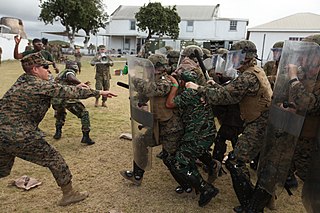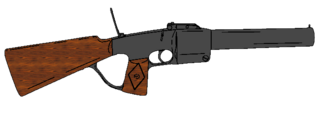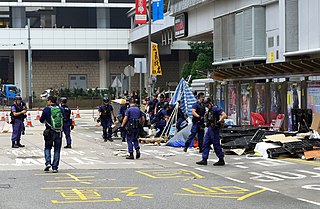
Non-lethal weapons, also called nonlethal weapons, less-lethal weapons, less-than-lethal weapons, non-deadly weapons, compliance weapons, or pain-inducing weapons are weapons intended to be less likely to kill a living target than conventional weapons such as knives and firearms with live ammunition. It is often understood that unintended or incidental casualties are risked wherever force is applied, however non-lethal weapons minimise the risk of casualties as much as possible. Non-lethal weapons are used in policing and combat situations to limit the escalation of conflict where employment of lethal force is prohibited or undesirable, where rules of engagement require minimum casualties, or where policy restricts the use of conventional force. However, these weapons occasionally cause serious injuries or death due to allergic reactions, improper use and/or other factors; for this reason the term "less-lethal" has been preferred by some organizations as it describes the risks of death more accurately than the term "non-lethal", which some have argued is a misnomer.

A grenade launcher is a weapon that fires a specially designed, large-caliber projectile, often with an explosive, smoke, or gas warhead. Today, the term generally refers to a class of dedicated firearms firing unitary grenade cartridges. The most common type are man-portable, shoulder-fired weapons issued to individuals, although larger crew-served launchers are issued at higher levels of organization by military forces.

Riot control measures are used by law enforcement, military, paramilitary or security forces to control, disperse, and arrest people who are involved in a riot, unlawful demonstration or unlawful protest.
Binary chemical weapons or munitions are chemical weapons which contain the toxic agent in its active state as chemical precursors that are significantly less toxic than the agent. This improves the safety of storing, transporting, and disposing of the weapon. Commonly, firing the munition removes a barrier between two precursors. These react to form the intended agent which is then aerosolized and distributed by a bursting charge.
The ARWEN ACE is a breech-loaded less-lethal launcher which fires a variety of 37mm less-lethal munitions which includes direct impact batons, chemical irritant delivery munitions and smoke delivery munitions.

In current usage, a riot gun or less-lethal launcher is a type of firearm used to fire "non-lethal" or "less-lethal" ammunition for the purpose of suppressing riots or apprehending suspects with minimal harm or risk. Less-lethal launchers may be special purpose firearms designed for riot control use, or standard firearms, usually shotguns and grenade launchers, adapted for riot control use with appropriate ammunition. The ammunition is most commonly found in 12 gauge shotguns and 37mm or 40 mm grenade launchers.

The Pine Bluff Arsenal is a United States Army installation in Jefferson County, Arkansas, about eight miles northwest of Pine Bluff and thirty miles southeast of Little Rock.
37 mm flare or "1.5 inch" caliber is the specification for a common launching system for non-lethal and less-lethal ammunition. Such launchers are also often known as "gas guns" due to their original use by police for launching tear gas projectiles. 37 mm systems are typically smoothbore as rifling is unnecessary or even detrimental to the performance of the usual projectiles.
37 mm gun or 3.7 cm gun can refer to several weapons or weapons systems. The "37 mm" refers to the inside diameter of the barrel of the gun, and therefore the diameter of the projectile it fires. However, the overall size and power of the gun itself can vary greatly between different weapons, in spite of them all being called "37 mm" guns.

The HK69A1 is a 40 mm grenade launcher developed and produced by the German arms manufacturer Heckler & Koch (H&K). The weapon was designed to engage enemy troops and strongpoints out to a distance of 350 m; it can also be used to deploy smoke grenades and illumination flares.
Nonivamide, also called pelargonic acid vanillylamide or PAVA, is an organic compound and a capsaicinoid. It is an amide of pelargonic acid and vanillyl amine. It is present in chili peppers, but is commonly manufactured synthetically. It is more heat-stable than capsaicin.
The E14 munition was a cardboard sub-munition developed by the United States biological weapons program as an anti-crop weapon. In a series of field tests in 1955, the E14 was loaded with fleas and air-dropped.
The Manville gun was a stockless, semi-automatic, revolver type gun, introduced in 1935 by Charles J. Manville. The Manville Gun was a large weapon, with a heavy cylinder being rotated for each shot by a clockwork-type spring. The spring was wound manually during the reloading.

LS is an abbreviation for a family of Chinese built precision-guided munitions (PGM) named Thunder Stone Precision Guided Bomb developed by China Aerospace Science and Technology Corporation (CASC). Alternatively, the LS PGB is also referred to by its gliding capability, as Thunder Stone Gliding Guided Bomb, or LS GGB. The guidance design of LS PGB is also adopted for another family of Chinese PGM, the YZ series, such as YZ-102 series. These PGMs are referred to in China as precision guided bombs (PGB).

The Milkor MGL is a lightweight 40 mm six-shot revolver-type grenade launcher developed and manufactured in South Africa by Milkor (Pty) Ltd. The MGL was demonstrated as a concept to the South African Defence Force (SADF) in 1981. The MGL was then officially accepted into service with the SADF as the Y2. After its introduction in 1983, the MGL was gradually adopted by the armed forces and law enforcement organizations of over 50 countries. Total production since 1983 has been more than 50,000 units.

The Federal Riot Gun (FRG) is a firearm made by Federal Laboratories Inc., designed to fire non-lethal munitions. Its ammunition includes 37 and 38mm baton and tear gas rounds. The baton rounds were cylindrical, rubber projectiles.

The GM-94 is a pump action grenade launcher for use by Russian special and security forces. Development of the GM-94 grenade launcher began in 1993, under the guidance of Vasilij Gryazev, chief designer of the KBP design bureau (Konstruktorskoye Byuro Priborostroyeniya;, in Tula, Russia.

A blast ball, also known as a tear gas ball, rubber ball grenade, or stinger grenade, is a ball-shaped, rubber coated, less-lethal grenade designed for law enforcement and riot control applications. A blast ball is similar to a stun grenade in that, when detonated, it generates a loud noise and bright light; however, it also releases a chemical irritant and occasionally also rubber pellets or fragments.

The Special Tactical Contingent, nicknamed the "Raptors", commonly known as the Special Tactical Squad (STS), is a specialist riot contingent of the Hong Kong Police Force under the command of the Police Tactical Unit (PTU).

A loitering munition, also known as a suicide drone, kamikaze drone, or exploding drone, is a kind of aerial weapon with a built-in warhead that is typically designed to loiter around a target area until a target is located, then attack the target by crashing into it. Loitering munitions enable faster reaction times against hidden targets that emerge for short periods without placing high-value platforms near the target area and also allow more selective targeting as the attack can be changed mid-flight or aborted.












